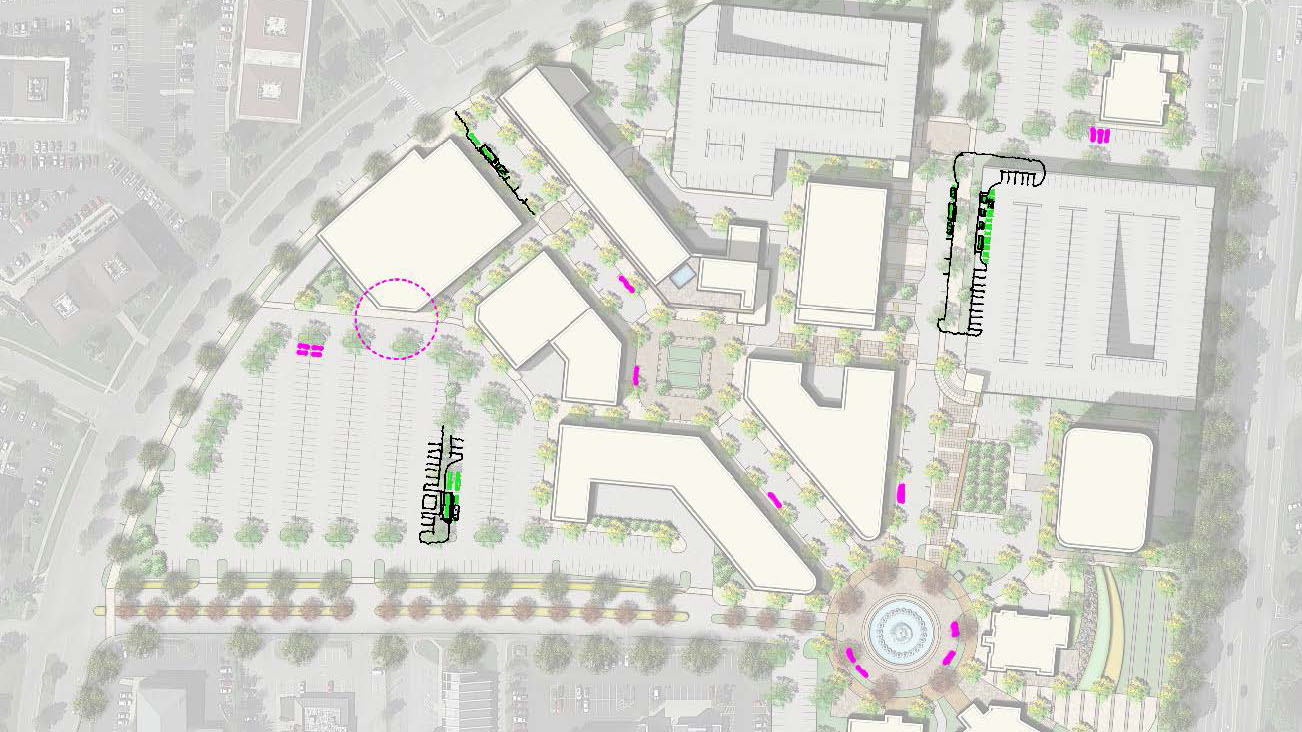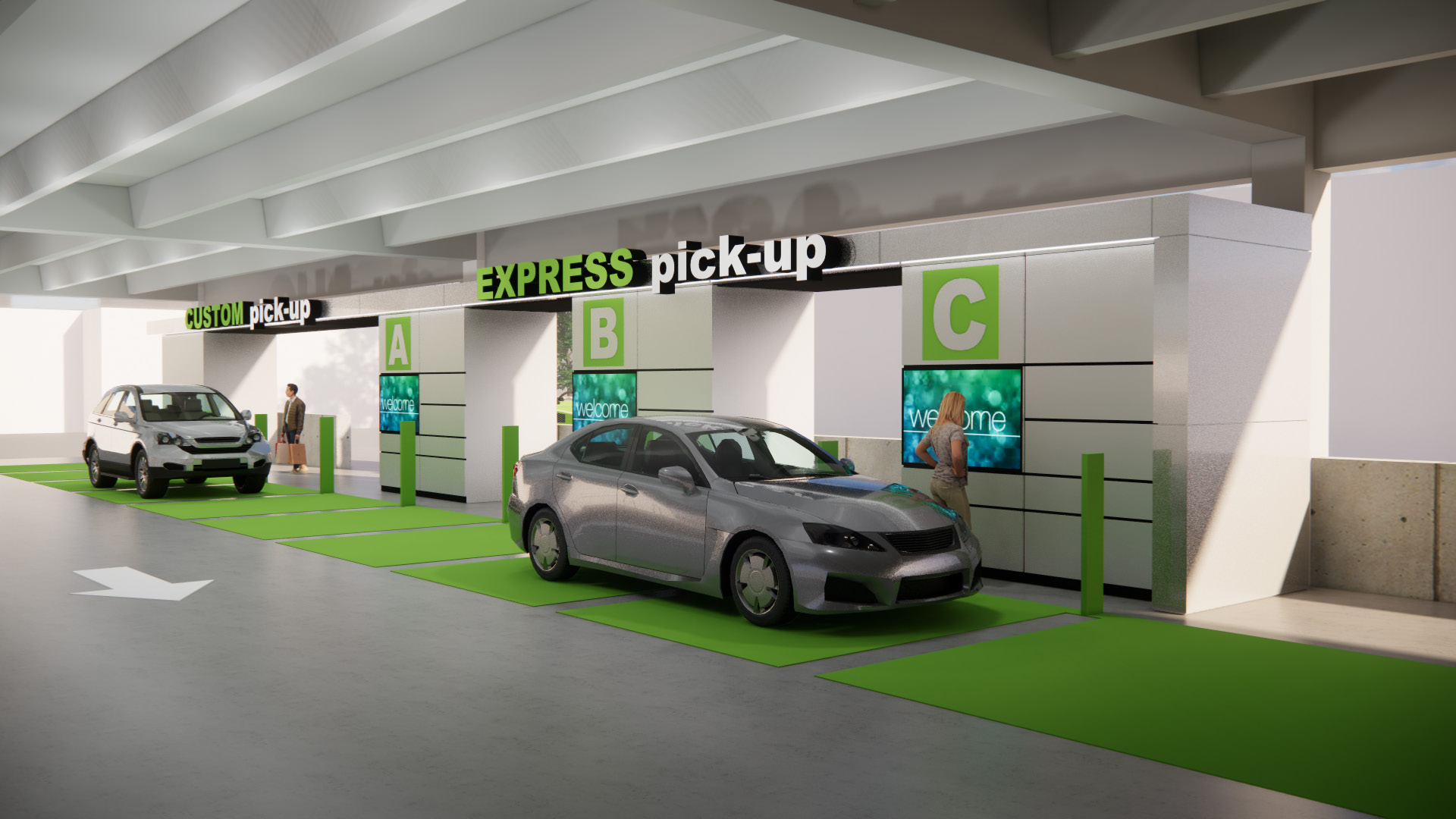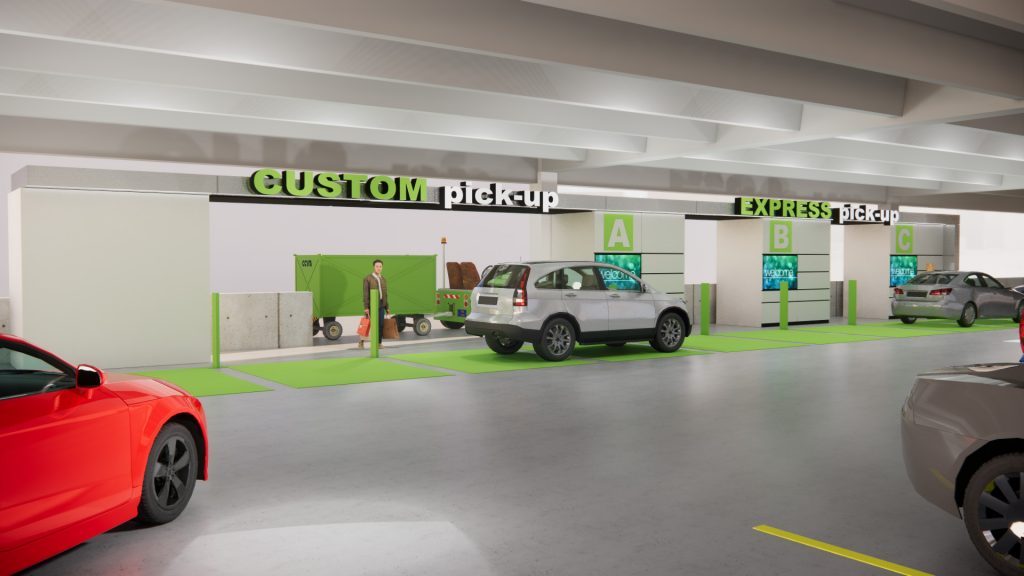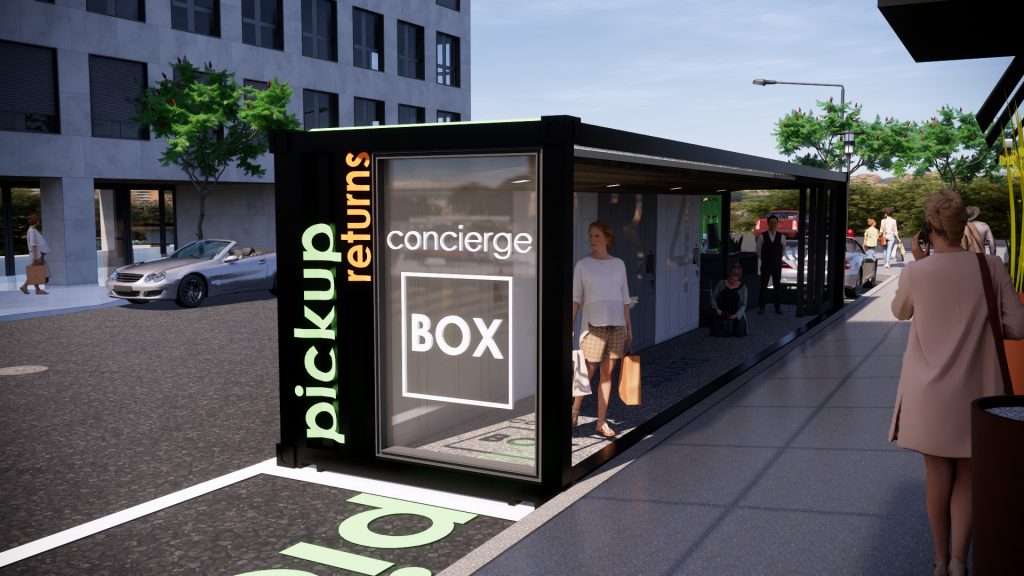NYC Fluid Retail: Restaurant Edition
New York Market Week and NYCxDESIGN are fast approaching and as retail continues to rapidly transform, we’re looking beyond the immediate industry, to environments and concepts inspiring the retail of tomorrow. Today’s consumers engage with brands in a fluid manner, the traditional sectors of the retail, restaurant, hospitality, and entertainment have blurred as the consumer-desired experience has become a mosaic of expectations, influenced heavily by engagement, access, and authenticity. Embracing these new expectations presents brands with a greater opportunity to differentiate, cross-sell and expand the breadth of their brand experience. So, this year while in the city we’ll be exploring some of the city’s most innovative new concepts across multiple industries, that we think could be a driving force in the retail experience of the future.
This first segment will focus on Food + Beverage concepts, with more markets showcased in the coming weeks. Below you will find the best spots in and around NYC to experience food – whether it’s a market hall, grocery pop-up, or mobile supper club.
Resident | Mobile Supper Club
New York’s newest buzzy supper club popping up in secret locations in Williamsburg, Brooklyn. Acting as a culinary incubator pop-up, chefs and dinner guests and chefs get the chance to host one another to enjoy a meal and share stories.
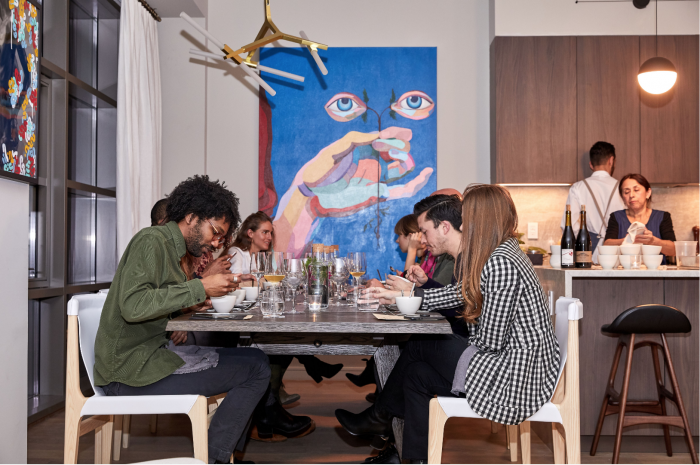
Hungry Root | Flatiron District Pop-Up
This e-commerce grocer debuted it’s first ever IRL pop-up this spring in the Flatiron district. At the space, one can find individual items the brand provides online. The store is as bright and charming as the brand and you’re sure to find something to snack on if you stop by.
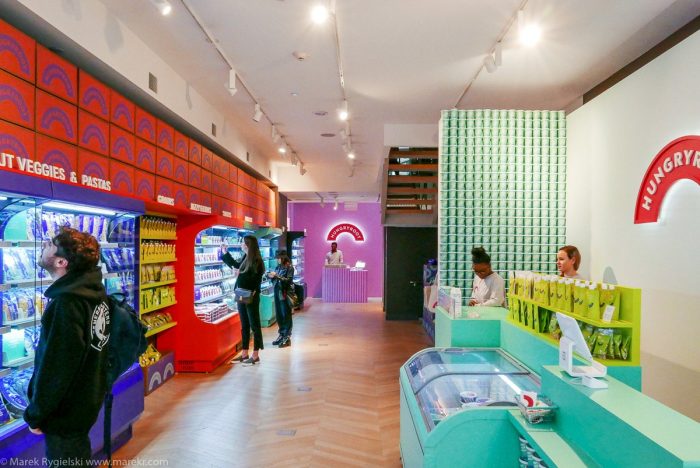
Market Line at Essex Crossing (Opening May13th) | Lower East Side Food Hall
The highly anticipated move of Essex Street Market has come and many of its legacy vendors are going with it. Previously known as NYC’s oldest public market, the move to Essex Crossing will make room for even more food vendors and businesses alike. In addition to plenty of food stops, ESM will also have retail, office, and apartment spaces. New to the market’s concept will be the Market Line, a developer-owned food hall that will be located on the lower level.
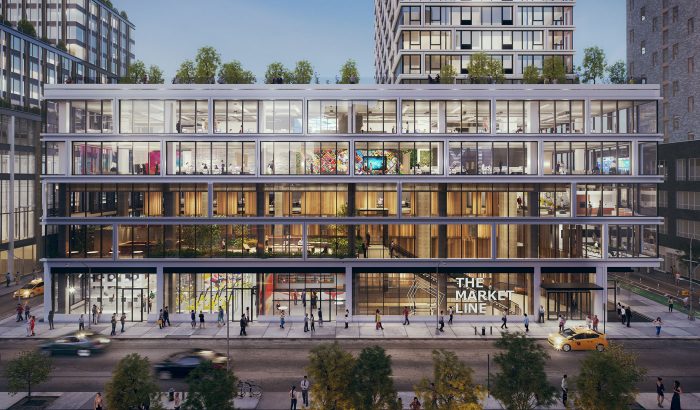
Mint Kitchen | Union Square Fast Casual
Mint Kitchen focuses on fresh Israeli dishes and snacks as a fast-casual concept. The 50-seat space is bright and open, finished with light wood and lots of greenery. A traditional taboon oven anchors an open kitchen decorated with emerald-colored tiling allowing customers to see the chefs in action.
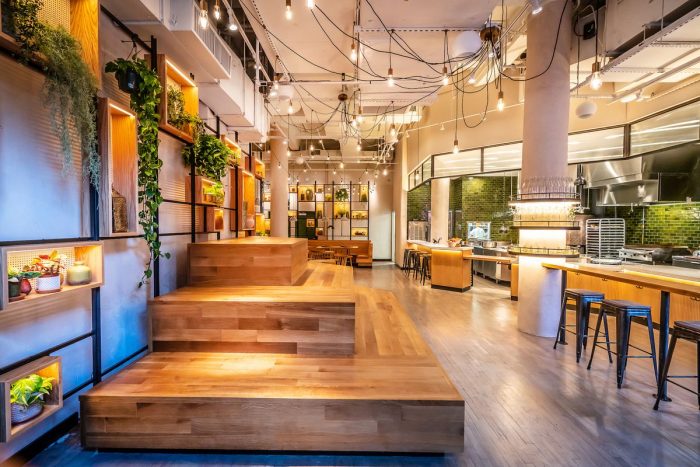
Gertie | Williamsburg Luncheonette With A Twist
Paying homage to an iconic grandmother, Gertie located in Williamsburg is a newly opened “luncheonette” serving old-school deli counter offerings with a 2019 twist. Here, silverware is presented in mason jars and vintage jars and a colorful mural compliments the naturally lit, 70s motif themed spot.
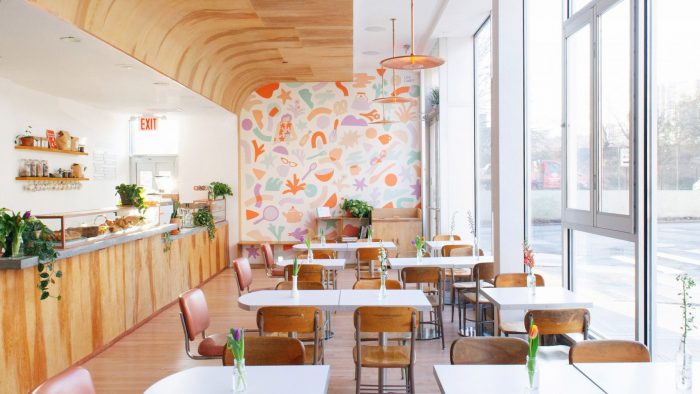
GupShup | Gramercy Hot Spot
The modern Indian theme trend has spread wide across NYC and GupShup located in Gramercy is rocking it in full force dishing 70’s Bombay vibes. In addition to tasting fusion heavy dishes, visitors can enjoy live music while surrounded by shiny décor, bold murals, and grand chandeliers.
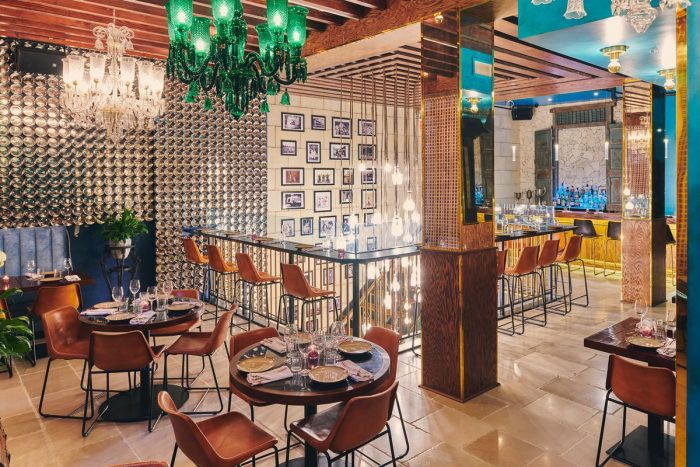
Junzi Kitchen | Manhattan Ambitious Fast Casual
Called the ”Chinese SweetGreen” Junzi is a fast-casual concept serving up Asian dishes that you may have never heard of. The company hopes to open 15-20 more locations in Manhattan in the next 3 years and hopes to transform the mainstream American perception of Asian cuisine.
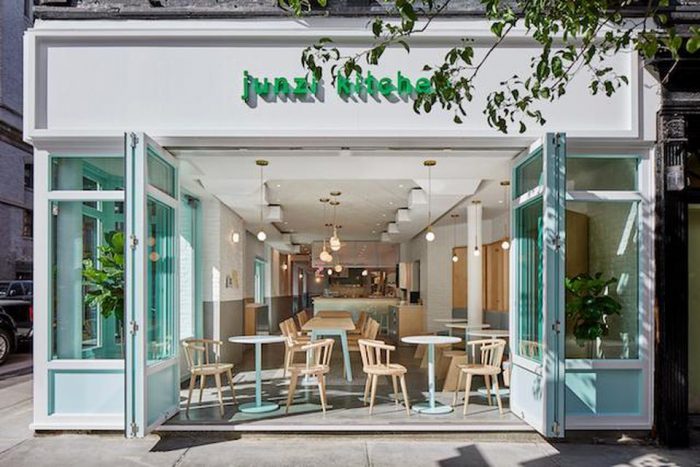
Mission Chinese Food Brooklyn | Buschwick Hot Spot
Featuring a stark concrete interior lit by LED tubes, MCF in Bushwick is nothing short of what you’d expect from this celebrity chef-owned restaurant. Inside you not only get to experience a unique style of cooking but an array of interesting short films produced by the restaurant’s design team.
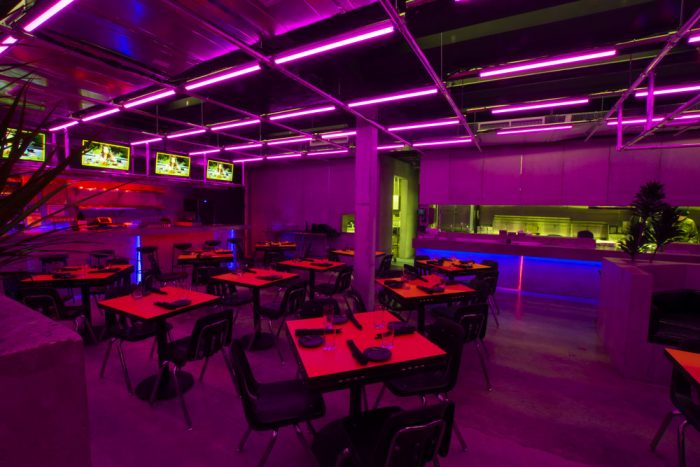
Mercado Little Spain | Hudson Yards Food Hall
This newly opened (and still in progress) food located at Hudson Yards aims to showcase all that Spain’s culinary scene has to offer. The 35,000 SF space has three full-service restaurants, plenty of space for tapas, wine, and coffee, retail space for a flower and dry goods shop, and over a dozen vendor stalls.
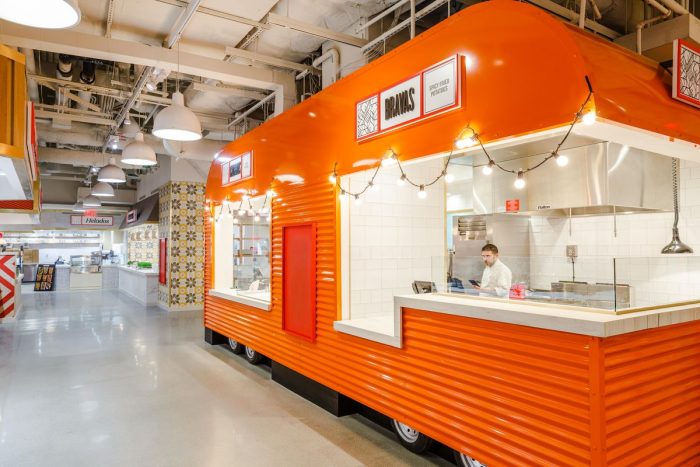
The Business Journals: Trammell Crow Industrial Project Nears Completion at Seattle Port
Read more with The Business Journals here.
Reimagining amenities for the future of workplace
Holly Williamson, design director at NELSON Worldwide, writes about workplace amenities and how they’ve changed due to COVID-19. From virtual meeting tools to concierge services, there are plenty of virtual amenities that can ensure the safety, productivity and well-being of a company, both while working remotely, and in the office. Read more here.
NELSON Worldwide Moves into New Manhattan Office
NEW YORK – November 30, 2023 – Award-winning architecture, design, and strategy firm NELSON Worldwide is thrilled to announce it has moved into a brand-new office space in Manhattan. Located in the heart of Midtown South at 470 Park Ave South, Suite 700, this move signifies NELSON’s unwavering commitment to its team members and clients in New York.
Spanning the entire 7th floor of the 18-story pre-war building, NELSON’s new office blends modern amenities and functionality with the building’s historical charm and details. The newly renovated space boasts expansive windows, allowing for an abundance of natural light to flood in.
Located in close proximity to Madison Square Park, boutique residential and hotel options, as well as numerous amenities that contribute to a flourishing local community, NELSON’s new space at 470 Park Ave South is also in walkable distance from Grand Central Terminal, Penn Station, the 33rd Street subway, the PATH, and various bus lines.
NELSON’s new space is representative of the exciting growth ahead and positions the firm to make a significant impact through its ongoing and future work with distinguished clients in years to come.
How To Plan Retail Spaces For Millenials
Larger than the epic Baby Boom generation, millennials currently make up about 92 million of the population in the US. Born between the 1980 and 2000, Millennials (or Generation Yers) are defined as those who reached adulthood during the 21st century. They’re known to be incredibly tech-savvy, environmentally friendly, and avid researchers – especially when it comes to making purchases. While it is true that millennials still make 75% of their purchases in traditional brick-and-mortar retail stores, over half compare prices and actively research brands, prices and reviews before ever setting foot inside the physical location. For brands wanting to ensure that the Millennials who have researched them and their products online reason complete the final in-person sale, it is incredibly important to pay attention to both in-store design as well as the design of websites and mobile apps.
Here are some tips for designing brick-and-mortar locations that benefit millennials:
1. Utilize Omnichannel
The design and brand of your website, mobile apps and online stores as well as your brick-and-mortar locations should feel like it is from the same company. Creating a similar experience and brand in all “locations’ whether physical or virtual gives shoppers the comfort to browse and research before even leaving their house. Some great examples include Sephora and L.L. Bean.
2. Cut Down on the Clutter
Minimizing clutter and adding more organized “white space” provides a sense of serenity for millennial shoppers. Try reducing the number of displays or sales racks.
3. Pay Attention to Color
Limit your color palette to neutral colors rather than overly bright and bold. This evokes natural relaxation for Generation Yers. Bringing in colors from nature is an easy way to provide a “getaway” experience. Think of Urban Outfitters.
4. Appeal to All the Senses
While design and color remain of paramount importance, you can’t forget about smell and sound. Calming music and scents tailored to your brand can greatly influence shoppers’ decisions. Stores like Bath and Body Works appeal to all the senses. Soft lighting accompanied by calm music and amazing smells invite the shopper to escape to their “calming space” without having to leave the store.
5. Create Space
If you can’t afford an entire remodel, try creating resting space within. Rearranging furniture and clothing racks can provide optimum space for millennials to shop and recharge before finalizing their purchase. Examples include stores like Nordstrom that have café style areas.
For more tips from Eric Eberhardt, Director of Retail at NELSON, click here.
EuroShop 2017: Bogner
Foreword: Every 3 years, 100,000+ visitors flock to an international destination to experience all things retail. Hailed as the “Global Retail Trade Fair,” EuroShop covers all things retail related, from store design to visual merchandising. Located in Dusseldorf, Germany, the event offers 17 exhibition halls within 19 different buildings. A group of lucky FRCH-ers made the trip this year and will be sharing global trends and inspiration from the conference and nearby travel all week!
We see the trend of bringing the outdoors “in” for retail, and Bogner in Cologne is a great example of the use of natural resources to create great impact on the store experience. Whether it is for displaying the merchandise or functional users, the added aesthetic to the store is a natural fit.
A sophisticated retail experience showcasing premier German sporting apparel. For those not familiar with the history of the brand or the founder Willy Bogner, check out the website. The entrepreneurship, artistry, and athleticism rooted in the brand is truly unique.
Eileen Fisher Renew
Having been a fan of the Eileen Fisher brand for a few years, I was excited to discover one of their Renew stores in downtown Columbia City, a suburb of Seattle. According to the website, Eileen Fisher Renew is the brand “taking responsibility for the lifecycle of their clothes”. Their vision is admirable – a future without waste. When a gently-worn article of clothing is returned to Eileen Fisher, the customer receives a $5 rewards card, then if the item is not directly re-sold, it is either mended, overdyed, resewn or felted before re-selling.
The Renew shop in Columbia City was quite busy for a rainy Saturday morning. The selection of merchandise was pretty great, and upon perusal, most garments seemed in near-new condition. The store was simply laid out, a typical dry-cleaners’ conveyor rack ran along one wall and housed a tremendous amount of sweaters, grouped by color. In the front window of the shop was a small tailoring area for mending and adjustments. The sales clerk commented that she loved being able to actually sew on the job, as well as tend to the store.
The brand’s Resewn Collection includes limited-edition pieces all cut and sewn from old clothes and entirely one of a kind. Overall the price points were very reasonable, compared to new Eileen Fisher garments. Aside from Seattle, The Resewn Collection is only available at Eileen Fisher Soho and Making Space Brooklyn. They also have a company-owned factory in Irvington, NY that is dedicated to clothing renewal.
This brand has taken on a noble cause that goes beyond retail and hopefully we will see more stores like this in the future.

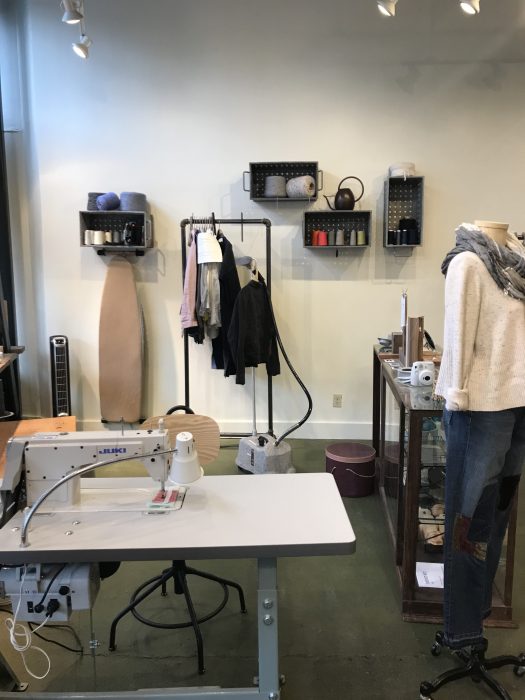
The Four Principles to Creating Successful Click-and-Collect Solutions
With the rapid growth of e-commerce and a global pandemic causing retail developments to limit capacity or temporarily close, transforming underutilized space into creative pickup and return concepts is a clever and valuable way to meet consumer demands now and in the future. When activating a development for click-and-collect opportunities, there are four principles to creating successful consumer engagement:
Identify underutilized space
Whether it’s a mixed-use development with underutilized storefront parking, or a traditional mall with excess garage space, the first step is identifying these dead spaces and transforming it to become a new touchpoint for transaction.
With increased delivery speeds, ride sharing apps, and lower foot traffic inside stores due to COVID-19, the demand for parking is shrinking. Developers can outfit a few parallel parking spaces in front of stores with prefabricated shipping containers that house walk-up lockers with adjacent loading spaces. This allows shoppers to quickly drop off returns or pick up orders without having to go inside a crowded store.
Traditional malls and shopping centers have a plethora of unused parking spaces that can be made into something more relevant for today’s consumer. A partial row of parking spaces within an existing surface lot or garage can be converted into a drive-up pickup area. These destinations can offer automated lockers or loading/unloading services.
Provide designated support
Having a viable click-and-collect solution is nothing without support. In-person or digitally operated, it’s critical to make these novel activations successful.
Support looks different depending on the type of development. If it’s a standalone click-and-collect box located in an isolated parking lot, it may need a designated customer service representative. If it’s directly connected to a shopping center with plenty of in-person support nearby, a designated app or digital kiosk could suffice. Determine what’s right for the development and provide a thoughtful support model that fits.
One trend we see many brands adopting post-pandemic is smartphone technology services that offer product information and seamless support. As consumers continue to avoid communal, high-touch surfaces, brands have realized that the technology found inside our pockets is a valuable channel for click-and-collect models.
Create an integrated customer journey
While support is just one element of the larger customer journey, developers must also consider the holistic experience from start to finish to make a positive, lasting impression. It starts with the promotion of the service offering on the shopping center’s website, mobile app, or social media accounts. Consumers must first be aware of the perk before they can start to enjoy it. It is also about managing traffic for both cars and people, wayfinding, and minimizing bottlenecks.
Communication, notifications, and status updates leading up to the pick up or return are imperative. This can be accomplished through text message or email. Upon arriving to the destination, minimizing confusion and frustration can be solved immediately through clear signage. Consistent wayfinding from the second a consumer enters a shopping center is another key element of a successful, streamlined customer journey.
When considering a parking lot click-and-collect solution, there should be dedicated lanes for people dropping off versus picking up – even dedicated entrances may be necessary for in-store click-and-collect models. It’s about seamlessly integrating both physical and digital touchpoints for consumers, so they are always aware of what to expect and what they need to do to accomplish the task at hand.
Remember your brand purpose
Brands must be strategic about how they approach these strategies, especially today while navigating the impacts of COVID-19. Even if it’s a short-term solution, it’s still a reflection of the brand and must feel authentic to consumers.
Developers must lean into their brand and make their click-and-collect solutions look and feel like what they already have to offer. Signage, wayfinding, and branding for these services is a great opportunity to make an immediate impact and present a true “wow” factor. Temporary sandwich boards and do-it-yourself window signs will take away a property’s credibility and seem like an after-thought, versus an innovative, thoughtful solution. A professional, branded look will not only differentiate you from the competition but provide consumers with a visual cue that they can trust that their experience will be seamless and keep them coming back long after the pandemic is over.
Finally, consumers are fluid and are constantly altering their preferences based on external factors, their own need states, and advancements in technology. And to be successful, brands must function the same way. With the rise in e-commerce, and a global pandemic changing the way the world behaves, a demand lies in safe and convenient pickup and return options, but tomorrow, the ask may change, and the concept must be flexible and nimble enough to evolve with the consumer.
Levi’s and NELSON Take the Stage at the International Retail Design Conference
With a history spanning nearly 200 years, Levi’s sits in a unique position, as a heritage brand rich in stories, values, and authenticity unmatched by its competitors. While a storied past can be a treasure trove for brands, it’s important to adapt and resonate with contemporary consumers. Today, Levi’s appeal is stronger than ever, remaining relevant with new generations of consumers who have an overwhelming amount of denim choices.
On Thursday, October 26th at 4:15pm CST, NELSON Chief Brand & Creative Officer, Bevan Bloemendaal, and Lifestyle Studio Leader, Faith Huddleston will be joined by Levi’s Director of Global Store Design, Jesse Moyer for a fireside chat at the International Retail Design Conference in Minneapolis. During this closing keynote, Jesse, Bevan, and Faith will discuss how Levi’s remains relevant and ahead of the competition. What do they prioritize when it comes to store design and the in-store experience? Find out in this “riveting” session from two different perspectives – client and designer.
Register today for the International Retail Design Conference to attend this exclusive look at Levi’s, and for perspective on how centuries-old brands thrive in the 21st century. Save $100 on event registration with promo code EABGUEST. Restrictions apply. See website for details.
